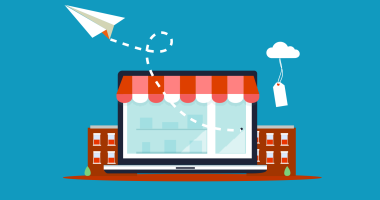
Table of Contents
- Introduction
- 7 Powerful Email Marketing Strategies and Tips
- Clean Up Your Email List
- Make Use of Automation
- Optimize for mobile
- Test Your emails
- Send the right number of emails at the right time
- Final Thoughts
Introduction
More than 319.6 billion emails are sent daily, but that number is expected to reach 376 billion by the end of 2025!
One of the most important aspects of inbound marketing is ensuring your emails end up in front of people who want to receive them.
Unfortunately, even if you have a great product or message, there’s no guarantee that your emails will make it past a customer’s inbox clutter or spam filters.
And even if someone opens your email, there’s no guarantee they’ll take further action.
But, Do not worry! We’ve got you covered.
This guide will walk you through some best email marketing strategies and tips for higher open rates, increased click-through, and better conversions.
7 Powerful Email Marketing Strategies and Tips
Let’s dive straight into the email marketing strategies and tips, to help you master the art of email marketing and earn the reads you deserve.
1. Use Segmentation and Personalisation
Segmenting your email list and sending targeted messages to specific segments is important. Avoid sending the same email to everyone.
You should determine your critical segments and develop relevant campaigns for them accordingly. You may segment them based on demographic data or email segmentation, or maybe past purchases.
Once your segments are ready, It’s important to consider what kind of content your segments might want to see from you – whether that’s promotional offers or just a reminder that you’re still around.
Your most loyal customers will appreciate being kept in the loop, whereas a past customer who hasn’t interacted with you in a while might need a little incentive – like a discount – to come back.
Create personalized, targeted marketing messages for each segment of your users after you segment them.
The fact is, people respond well to personalization!
Nearly 49% of consumers say they will likely become repeat buyers after a personalized shopping experience with a retailer.
Personalization is an excellent strategy for encouraging subscribers to engage with your emails and learn more about what you offer.
If you’re looking for ideas to make your email campaigns more personalized, we have some techniques for you-
- The first step in personalizing your email marketing campaign is to create customer personas. Get a good understanding of your target audience before creating personalized emails.
- You’ll need data to succeed with email personalization, but getting a bunch of data at once can be overwhelming. Start with primary demographic data like age, gender, and location.
- Using the recipient’s first or last name is the basis of personalization.
If you are emailing someone for professional reasons, it would be more appropriate to use their last name (e.g., Greetings, Mr. Smith).
- You can use their first name (e.g., Hi, John) to set a casual tone. It is up to you to decide which approach is more suitable for the email you are sending.
- Cliches and pre-made templates are the devils of good email copywriting. Be bold and use a casual writing style. Use your understanding of their behavior and preferences to structure your message in an engaging way.
2. Catchy Subject Line
69% of recipients report emails as spam just based on their subject lines, while research also shows that 47% of email recipients open an email based on the subject line alone.
This means your subject lines have the potential to wipe out or build your email marketing campaigns.
Here are some tips you can use when creating your subject lines-
Make it Short
Keep your subject line under 40 characters or about five to seven words to avoid being cut short. Keep it simple, sweet, and engaging.
Avoid using promotional language in your subject lines
Avoid using too much punctuation, especially all caps or multiple exclamation points. Likewise, you should avoid using overtly promotional language, such as “Buy now” or “Free.”
This can come across as shouting, and it makes your email seem spammy and will likely result in your email being sent straight to the recipient’s junk folder.
Ask Questions
Provoking your readers’ interest by asking them questions is a great way to get their attention and pique their curiosity.
Make use of humor
An email that makes people smile or curious is more likely to be opened.
Add emojis
Emojis are said to impact the open rates of emails significantly. Embrace the use of emojis by including ones that are relevant or that emphasize your point.
Make your words powerful
Avoid using weak or cliched words. Make use of words that get people excited and invite them to take action.
You can find more about creating excellent email subject lines.
3. Clean Up Your Email List
The impending demise of third-party cookies in 2024, and the introduction of Apple’s Mail Privacy Protection (MPP) have made data capture and use even more important.
Email is the most important first-party data source – consensual information. At the same time, marketers need to take steps to protect it. Removing inactive and unengaged customers from your email list is a good way to start.
Before you scrub your list, try to identify whether a subscriber is truly inactive or simply uninterested. Try to re-engage with them, and if re-engagement doesn’t work, simply remove them from your database.
4. Make Use of Automation
With AI-powered tools, marketers can make better decisions and deliver more personalized customer experiences.
By automating email campaigns, marketers can save time and effort while reaching the right people with the right message.
AI-powered email automation tools can also help to improve conversions by delivering more relevant and timely messages.
In email automation, a trigger can be anything from a specific date to a contact’s activity.
For example, when you get a new subscriber, following up with a warm welcome can help turn new leads into customers without any extra effort. Or, if someone hasn’t opened one of your emails in a while, you might want to send them a reminder.
Cart abandonment can be frustrating, but it doesn’t have to mean the end of the sale. A trigger email can help you recover lost sales and turn abandoners into loyal customers.
You can select triggers and triggered messages depending on your contact’s journey.
To learn how to make email automation more effective, click here.
5. Optimize for mobile
80% of people delete email messages when they don’t display well on mobile screens.
This statistic should convince you that mobile-friendly emails are necessary if you want more subscribers to read them.
It’s important to ensure that your emails display and work correctly on mobile phones.
Use responsive design for your emails so they adapt to the device a subscriber uses.
Here are some tips to help you create mobile-friendly email designs:
Maintain a simple design
To ensure that your email design is more friendly, keep it simple and precise as much as possible. An easy and simple design is more comfortable for mobile subscribers and looks beautiful and neat.
Do not overuse visuals
Using visual elements like video, images, and GIFs wisely in your emails is important as they can make your emails heavier in size. As a result, the email will take longer to load and may have a negative impact on the mobile user experience. Try to shrink and compress the graphics wherever possible.
White space is your UI’s best friend
It would be wise to use well-placed white space to let your email breathe and make them more readable for your mobile users.
White space is especially important on the phone because it helps guide viewers to where they’re meant to look.
Don’t overlook CTAs
Successful email campaigns require a clear and effective Call to Action (CTAs). While this is generally a straightforward task, it can be more challenging when designing emails for mobile devices.
The smaller screen size means that CTAs must be placed carefully in order to avoid being missed or ignored.
Make sure that your CTAs are large enough to be easily clicked on.
6. Test Your emails
One of the best tips for email marketing would be to A/B test your emails.
Without split testing, you won’t know the version that works best for your business and will waste time sending ineffective emails.
Perform an A/B test for everything you do in your email marketing campaigns, whether it be testing different subject lines to see which gets more opens or testing CTA button colors to see which gets more clicks.
Here are the main benefits of split testing your email marketing campaign:
- Once you find the right subject line, your open rate increases.
- Testing and changing your email copy boosts click-through rates.
- Gives you insight into what customers want and how they interact with your emails.
7. Send the right number of emails at the right time
Trying to figure out the perfect email frequency can be a daunting task.
Should you send emails every day or space them out over the course of a week? How often is too often, and how will you know if you’re bombarding your subscribers with too many emails?
The truth is, no magic number or formula will help you determine the perfect email frequency because every set of subscribers reacts differently. Some people enjoy receiving emails every day, while others find it annoying.
We recommend experimenting with different email frequencies with your target audience and seeing what works best for your business.
You can speed up the process by dividing your list into segments and sending emails at different frequencies to each one. The number of segments is determined by the number of email frequencies you want to test.
Then you can see which segment delivered the best results and make adjustments to the rest.
After a few trials, you will get a schedule based on data, which you can then use for your campaigns.
So don’t be afraid to experiment until you find the perfect email frequency for your business.
Likewise, there’s no silver bullet when it comes to the best time to send emails.
Every brand has a unique audience with different demands and behaviors.
So, the best time for one brand to send their emails might not be the best time for another brand. The best way to find out what works best for your audience is to test different days and times.
But according to research, the first three working days of the week appear to be the best times for seeing engagement levels, especially between 9 a.m. and 3 p.m.
Final Thoughts
Email marketing can be a great way to connect with your audience, nurture relationships with them, and tailor content specifically for their needs.
With so many different strategies and tactics to choose from, it can be difficult to know where to start. However, by including the basics and refining your approach, you can create a winning campaign that will engage your audience and help to nurture relationships with them.
In this post, we have outlined the email marketing strategies you can use to make your campaign successful in the upcoming year.
So make the most of your subscriber list and create an email marketing campaign to help you succeed in the coming year.




